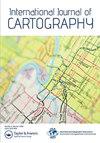Livestock demarcating livestock routes: a methodological proposal for enhancing transparency and legality in land management and linear infrastructure development
IF 0.9
Q4 COMPUTER SCIENCE, INFORMATION SYSTEMS
引用次数: 0
Abstract
ABSTRACTThis paper proposes a comprehensive methodology for demarcating livestock routes to enhance transparency and legality in land management and linear infrastructure development. The lack of demarcation of these routes can lead to conflicts between individuals and the public domain, hindering plans proposed by the administrations. The University of Huelva has developed a methodology that includes specific phases, such as the interpretation of sketches, investigation of documentary collections, and topographic survey, leading to the generation of demarcation plans for livestock tracks. The use of new geographic information technologies allows for a digital representation of these routes, enabling their cataloging for better conservation and use. The innovative use of historical cartography and the latest in information and communication technologies not only allows for the exact demarcation of livestock routes but also provides a glimpse into their past and enables their protection and promotion as cultural and landscape assets. The demarcation of livestock routes can contribute to the development of linear infrastructure and land management programs, benefiting the environment and socioeconomic development.RÉSUMÉCet article propose une méthodologie complète pour la délimitation des parcours du bétail pour améliorer la transparence et la légalité dans la gestion des terres et le développement d'infrastructures linéaires. L'absence de délimitation de ces chemins peut aboutir à des conflits entre les particuliers et le domaine public, ce qui peut gêner les plans proposés par l'administration. L'université de Huelva a développé une méthodologie qui inclut des étapes spécifiques telles que l'interprétation des croquis, la recherche de collections documentaires, et les relevés topographiques, qui aboutit à la création de plans de délimitation des parcours du bétail. L'utilisation des nouvelles technologies de l'information géographique permet la représentation numérique de ces chemins, ce qui permet leur catalogage pour une meilleure conservation et utilisation. L'utilisation innovante de la cartographie historique et des dernières technologies de l'information et de la communication permet non seulement d'extraire les délimitations précises de ces parcours du bétail mais aussi donne un aperçu de leur passé et permet leur protection et leur promotion en tant que biens culturels et paysagers. La délimitation des parcours du bétail peut contribuer au développement des infrastructures linéaires et des programmes de gestion des terres au bénéfice de l'environnement et du développement socio-économique.KEYWORDS: Livestock route demarcationgeographic information technologiesland management and linear infrastructure AcknowledgementsWe would like to express our gratitude to the University of Huelva and the Consejería de Medio Ambiente, Junta de Andalucia for their support and funding for this research project. We also thank all the individuals and institutions who provided valuable insights and contributions to the development of this methodology. Lastly, we acknowledge the hard work and dedication of our team members, Moreno Cuesta, Gonzalez Algarra, Alvarez Segovia, and Zabalo Torrejon, for their tireless efforts in the completion of this study.Disclosure statementNo potential conflict of interest was reported by the author(s).Data availability statementIn accordance with our commitment to transparency and reproducibility, all data used in this study have been deposited in the reputable data repository Figshare, with the DOI 10.6084/m9.figshare.22732757, ensuring accessibility and open access for the scientific community.Additional informationFundingRISE Project. Funding by European Union (European Regional Development Fund-FEDER).Notes on contributorsEduardo Moreno CuestaEduardo Moreno Cuesta an Associate Professor at the University of Huelva (Agroforestry Sciences), specializing in areas such as Remote Sensing, Environmental Impact Assessment, and Geographic Information Systems (GIS). He has authored multiple publications, focusing on landscape characterization and evaluating new uses for cattle ways, among other topics.Encarnacion Gonzalez AlgarraEncarnación González Algarra is a Professor at the University of Huelva, specializing in Agroforestry Sciences. She holds the position of 'Profesor titular de Universidad' at the University of Huelva, Andalucia, Spain.Ezequiel Alvarez SegoviaEzequiel Alvarez Segovia Environmental Technician at the ‘Conserjeria de Medio Ambiente de la Junta de Andalucia', Spain.Alberto Zabalo TorrejonAlberto Zabalo Torrejon is a Professor at Universidad de Huelva, specializing in Agroforestry Sciences. He holds a Doctorate obtained in December 2006 and has been contributing to various research areas, including energy-efficient buildings, skills assessment in agricultural engineering, and satellite imagery applications in agriculture and development projects. His work spans multiple publications and collaborations with researchers in these fields.牲畜划定牲畜路线:提高土地管理和线性基础设施发展透明度和合法性的方法建议
摘要本文提出了一种划定牲畜路线的综合方法,以提高土地管理和线性基础设施发展的透明度和合法性。这些路线的缺乏划分可能导致个人和公共领域之间的冲突,阻碍了行政部门提出的计划。韦尔瓦大学开发了一种方法,包括具体阶段,如草图的解释、文献收集的调查和地形调查,从而产生牲畜足迹的划分计划。利用新的地理信息技术,可以对这些路线进行数字化表示,从而对其进行分类,以便更好地保护和利用。创新地使用历史制图和最新的信息和通信技术,不仅可以精确地划定牲畜路线,还可以一瞥它们的过去,并使它们能够作为文化和景观资产得到保护和推广。牲畜路线的划定有助于线性基础设施和土地管理方案的发展,有利于环境和社会经济发展。RÉSUMÉCet文章提出了一种新方法,即将所有的薪金薪金和其他薪金薪金结合起来,将所有薪金薪金和其他薪金薪金结合起来,将所有薪金薪金和其他薪金薪金结合起来,将所有薪金薪金和其他薪金薪金结合起来。“没有限制限制”的规定规定了关于具体人员和领域公众之间的冲突的规定,并提出了“禁止管理”的建议gêner。韦尔瓦大学的数据包括:<s:1> <s:1> <s:1> <s:1> <s:1> <s:1> <s:1> <s:1> <s:1> <s:1> <s:1> <s:1> <s:1> <s:1> <s:1> <s:1> <s:1> <s:1> <s:1> <s:1> <s:1> <s:1> <s:1> <s:1> <s:1> <s:1> <s:1> <s:1> <s:1> <s:1> <s:1>························新技术的利用,信息技术的利用,通讯技术的利用,通讯技术的利用,通讯技术的利用,通讯技术的利用,通讯技术的利用,通讯技术的利用,通讯技术的利用,通讯技术的利用,通讯技术的利用,通讯技术的利用。L 'utilisation innovante de la cartographie historique et des et de la交流的信息的最后的技术允许非seulement d 'extraire les精确界定de ces parcours du betail但是也多恩联合国梗概为了过时等可以为了保护他们等促进en如此更,好文化paysagers。杜拉划定des parcours betail可以贡献的非盟开发署des基础设施线性et des项目de治理des特雷斯盟圣俸de l 'environnement et du开发署socio-economique。关键词:牲畜路线划分地理信息技术土地管理和线性基础设施致谢我们要感谢韦尔瓦大学和安达卢西亚政府Consejería环境媒体组织对本研究项目的支持和资助。我们还要感谢所有为这一方法的发展提供宝贵见解和贡献的个人和机构。最后,我们感谢我们的团队成员Moreno Cuesta, Gonzalez Algarra, Alvarez Segovia和Zabalo Torrejon的辛勤工作和奉献精神,他们为完成这项研究付出了不懈的努力。披露声明作者未报告潜在的利益冲突。根据我们对透明度和可重复性的承诺,本研究中使用的所有数据都已存储在知名的数据存储库Figshare中,DOI: 10.6084/m9.figshare。22732757,确保科学界的可及性和开放获取。其他信息:fundingise项目。由欧洲联盟(欧洲区域发展基金-联邦基金)提供资金。作者简介:eduardo Moreno Cuesta, Huelva大学副教授(农林科学),主要研究领域为遥感、环境影响评估和地理信息系统(GIS)。他撰写了多篇出版物,重点关注景观特征和评估牛道的新用途,以及其他主题。encaracion Gonzalez AlgarraEncarnación González Algarra是韦尔瓦大学的教授,专攻农林业科学。她在西班牙安达卢西亚韦尔瓦大学(University of Huelva)担任“大学名誉教授”。Ezequiel Alvarez Segovia环境技术员,就职于西班牙“安达卢西亚军政府环境保护中心”。Alberto Zabalo TorrejonAlberto Zabalo TorrejonAlberto Zabalo torrejonhuelva大学教授,专攻农林业科学。他于2006年12月获得博士学位,并在多个研究领域做出了贡献,包括节能建筑、农业工程技能评估和卫星图像在农业和发展项目中的应用。
本文章由计算机程序翻译,如有差异,请以英文原文为准。
求助全文
约1分钟内获得全文
求助全文
来源期刊

International Journal of Cartography
Social Sciences-Geography, Planning and Development
CiteScore
1.40
自引率
0.00%
发文量
13
 求助内容:
求助内容: 应助结果提醒方式:
应助结果提醒方式:


